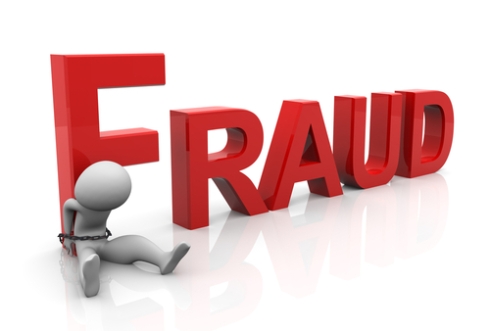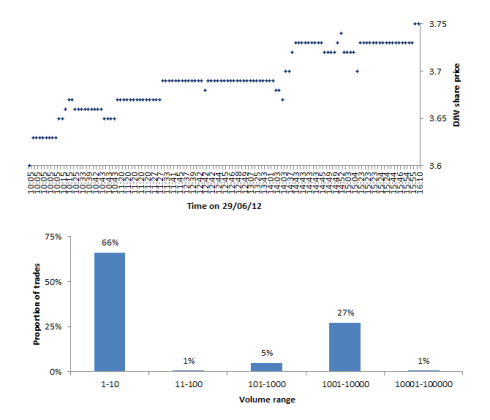In case you didn’t know, today is not only Friday the 13th, an “unlucky” day in Western superstition.
It is also Yom Kippur. Otherwise known as the “Day of Atonement”.
A day of “love and forgiveness”, and “The day on which G-d forgives for the less desirable actions of His nation”, according to the Jerusalem Post.
Which is both an ironic, and an apropos theme to carefully consider, in the light of today’s post.
Ever wonder why Bernie Madoff so famously and publicly went to gaol for his ponzi crimes, when no other banker or “investment adviser” did?
Take a slow, careful, thoughtful look at the list of his victims below.
See anything in those names that strikes you?
From the Wall Street Journal, March 6 2009:
|
Description
|
|||
|---|---|---|---|
|
Fairfield Greenwich Advisors
|
An investment management firm
|
$7,500,000,000
|
|
|
Tremont Group Holdings
|
Asset management firm
|
$3,300,000,000
|
|
|
Banco Santander
|
Spanish bank
|
$2,870,000,000
|
|
|
Bank Medici
|
Austrian bank
|
$2,100,000,000
|
|
|
Ascot Partners
|
A hedge fund founded by billionaire investor, philanthropist and GMAC chief J. Ezra Merkin
|
$1,800,000,000
|
|
|
Access International Advisors
|
A New York-based investment firm
|
$1,500,000,000
|
|
|
Fortis
|
Dutch bank
|
$1,350,000,000
|
|
|
Union Bancaire Privee
|
Swiss bank
|
$700,000,000
|
|
|
HSBC
|
British bank
|
$1,000,000,000
|
|
|
Natixis SA
|
A French investment bank
|
$554,400,000
|
|
|
Carl Shapiro
|
The founder and former chairman of apparel company Kay Windsor Inc., and his wife
|
$500,000,000
|
|
|
Royal Bank of Scotland Group PLC
|
British bank
|
$492,760,000
|
|
|
BNP Paribas
|
French bank
|
$431,170,000
|
|
|
BBVA
|
Spanish bank
|
$369,570,000
|
|
|
Man Group PLC
|
A U.K. hedge fund
|
$360,000,000
|
|
|
Reichmuth & Co.
|
A Swiss private bank
|
$327,000,000
|
|
|
Nomura Holdings
|
Japanese brokerage firm
|
$358,900,000
|
|
|
Maxam Capital Management
|
A fund of funds based in Darien, Connecticut
|
$280,000,000
|
|
|
EIM SA
|
A European investment manager with about $11 billion in assets
|
$230,000,000
|
|
|
AXA SA
|
French insurance giant
|
N/A
|
|
|
UniCredit SpA
|
Italian Bank
|
$92,390,000
|
|
|
Nordea Bank AB
|
Swedish Bank
|
$59,130,000
|
|
|
Hyposwiss
|
A Swiss private bank owned by St. Galler Kantonalbank
|
$50,000,000
|
|
|
Banque Benedict Hentsch & Cie. SA
|
A Swiss-based private bank
|
$48,800,000
|
|
|
Fairfield, Conn.
|
town pension fund
|
$42,000,000
|
|
|
Bramdean Alternatives
|
An asset manager
|
$31,200,000
|
|
|
Jewish Community Foundation of Los Angeles
|
The largest manager of charitable gift assets for Los Angeles Jewish philanthropists
|
$18,000,000
|
|
|
Harel Insurance Investments & Financial Services Ltd.
|
Israel-based insurance firm
|
$14,200,000
|
|
|
Baloise Holding AG
|
Swiss insurer
|
$13,000,000
|
|
|
Societe Generale
|
French Bank
|
$12,320,000
|
|
|
Groupama SA
|
French insurer
|
$12,320,000
|
|
|
Credit Agricole SA
|
French bank
|
$12,320,000
|
|
|
Richard Spring
|
individual investor
|
$11,000,000
|
|
|
RAB Capital
|
hedge fund
|
$10,000,000
|
|
|
Banco Popolare
|
Italian bank
|
$9,860,000
|
|
|
Korea Teachers Pension
|
A 10 trillion won Korean pension fund
|
$9,100,000
|
|
|
Swiss Life Holding
|
Swiss insurer
|
$78,900,000
|
|
|
North Shore-Long Island Jewish Health System
|
health system
|
$5,700,000
|
|
|
Neue Privat Bank
|
Swiss bank
|
$5,000,000
|
|
|
Clal Insurance Enterprise Holdings
|
An Israel-based financial services company
|
$3,100,000
|
|
|
Ira Roth
|
individual investor
|
$1,000,000
|
|
|
Mediobanca SpA
|
via its subsidiary Compagnie Monegasque de Banque.
|
$671,000
|
|
|
Fred Wilpon
|
owner of New York Mets
|
N/A
|
|
|
Steven Spielberg
|
The Spielberg charity — the Wunderkinder Foundation
|
N/A
|
|
|
JEHT Foundation
|
A New York foundation focused on electoral and criminal justice reform
|
N/A
|
|
|
Mortimer B. Zuckerman Charitable Remainder Trust
|
The charitable trust of real-estate magnate, who owns the Daily News and U.S. News & World Report
|
N/A
|
|
|
Robert I. Lappin Charitable Foundation
|
A Massachusetts-based Jewish charity
|
N/A
|
|
|
Chais Family Foundation
|
A charity that gave to Jewish causes
|
N/A
|
|
|
KBC Group NV
|
Belgian banking and insurance group
|
N/A
|
|
|
Barclays PLC
|
British bank
|
N/A
|
|
|
Dexia
|
French bank
|
N/A
|
|
|
Allianz Global Investors
|
The asset management unit of German insurer Allianz SE
|
N/A
|
|
|
Banco Espanol de Credito SA (Banesto)
|
A Spanish bank contolled by Banco Santander
|
N/A
|
|
|
CNP Assurances
|
French insurer
|
N/A
|
|
|
UBS AG
|
Swiss bank
|
N/A
|
|
|
Yeshiva University
|
A New York-based private university
|
$14,500,000
|
|
|
The Elie Wiesel Foundation for Humanity
|
The charitable foundation of Nobel laureate
|
$15,200,000
|
|
|
Leonard Feinstein
|
The co-founder of retailer Bed Bath & Beyond
|
N/A
|
|
|
Sen. Frank Lautenberg
|
The charitable foundation of the New Jersey Senator’s family
|
N/A
|
|
|
Norman Braman
|
former owner of Philadelphia Eagles
|
N/A
|
|
|
Jeffrey Katzenberg
|
The chief executive of DreamWorks Animation SKG Inc.
|
N/A
|
|
|
Gerald Breslauer
|
The Hollywood financial advisor to Steven Spielberg and Jeffrey Katzenberg
|
N/A
|
|
|
Kingate Management
|
hedge fund
|
N/A
|
|
|
Julian J. Levitt Foundation
|
Texas-based charity
|
N/A
|
|
|
Loeb family
|
N/A
|
N/A
|
|
|
Lawrence Velvel
|
individual investor
|
N/A
|
|
|
Fix Asset Management.
|
hedge fund
|
N/A
|
|
|
Genevalor, Benbassat & Cie.
|
money manager in Geneva
|
N/A
|
|
|
Banco Espirito Santo
|
Portugese bank
|
$21,400,000
|
|
|
Great Eastern Holding
|
Singapore insurer
|
$44,266,000
|
|
|
M&B Capital Advisers
|
Spanish brokerage
|
$52,800,000
|
|
|
Oddo et Cie
|
French financial services firm
|
$36,957,000
|
|
|
Royal Dutch Shell pension fund
|
Global energy and petrochemical company
|
N/A
|
|
|
Phoenix Holdings
|
Israeli financial services company
|
$12,600,000
|
|
|
Credicorp
|
Peruvian financial services company
|
$4,500,000
|
|
|
Fukoku Mutual Life Co.
|
Japanese insurer
|
N/A
|
|
|
New York Law School
|
law school in New York City
|
$300,000
|
|
|
Nipponkoa Insurance
|
Japanese insurer
|
N/A
|
|
|
Sumitomo Life Insurance Co.
|
Japanese insurer
|
$22,000,000
|
|
|
Swiss Reinsurance Co.
|
Swiss insurer
|
$3,000,000
|
|
|
Aozora Bank Ltd
|
Japanese lender
|
$137,000,000
|
|
|
UBI Banca
|
Italian bank
|
$86,000,000
|
|
|
Taiyo Life Insurance Co.
|
Japanese insurer
|
$221,000
|
|
|
Caisse d’Epargne
|
French bank
|
$11,100,000
|
|
|
J. Gurwin Foundation
|
Charity
|
N/A
|
|
|
EFG International
|
Swiss private bank
|
N/A
|
|
|
Fire and Police Pension Association of Colorado
|
Pension fund
|
N/A
|
|
|
International Olympic Committee
|
Olympic organizer
|
$4,800,000
|
|
|
Support Organization for the Madison Cultural Arts District
|
Wisconsin cultural organization
|
N/A
|
|
|
Credit Industrial et Commercial
|
French financial-services group
|
$125,400,000
|
|
|
Hadassah
|
U.S. women’s zionist organization
|
$90,000,000
|
|
|
United Association Plumbers & Steamfitters Local 267 in Syracuse
|
Local union pension and health care funds
|
N/A
|
|
|
Ramaz School
|
A Jewish school in New York
|
$6,000,000
|
|
|
Congregation Kehilath Jeshurun
|
A synagogue in New York
|
$3,500,000
|
|
|
The Maimonides School
|
A Jewish day school in Brookline, Mass.
|
$3,000,000
|
|
|
Yad Sarah
|
An Israeli nonprofit
|
$1,500,000
|
|
|
Kevin Bacon and wife Kyra Sedgwick
|
Hollywood actors
|
N/A
|
|
|
Eric Roth
|
Hollywood screenwriter
|
N/A
|
|
|
Henry Kaufman
|
Individual investor, former Salomon Brothers chief economist
|
N/A
|
|
|
New York University
|
University
|
$24,000,000
|
|
|
Aioi Insurance Co.
|
Japanese insurer
|
$1,100,000
|
|
|
Meiji Yasuda Life Insurance Co.
|
Japanese insurer
|
$1,100,000
|
|
|
Mitsui Sumitomo Insurance Co.
|
Japanese insurer
|
$8,800,000
|
|
|
Burt Ross
|
former mayor of a town in New Jersey
|
$5,000,000
|
|
|
Genium Advisors
|
Swiss money manager
|
$281,400
|
|
|
Sterling Stamos Capital Management LP
|
Investment firm with offices in New York City and Menlo Park, Calif.
|
N/A
|
|
|
Gabriel Partners
|
Money-management firm run by GMAC Chairman Ezra Merkin.
|
N/A
|
|
|
The Diocese of St. Thomas
|
Catholic church in the U.S. Virgin Islands
|
$2,000,000
|
|
|
Phyllis Molchatsky
|
individual investor
|
$17,000,000
|
|
|
Members of the Hillcrest Golf Club of St. Paul, Minn. and Oak Ridge Country Club in Hopkins, Minn.
|
country clubs
|
N/A
|
|
|
Bard College
|
University in New York
|
$3,000,000
|
|
|
Martin Rosenman
|
New York City-based heating oil distributor
|
$10,000,000
|
|
|
Marc Rich
|
Fugitive financier
|
N/A
|
|
|
Zsa Zsa Gabor
|
Actress
|
$10,000,000
|
|
|
Hadleigh Holdings LLC
|
Miami firm owned by businessman Stanley Kriegler
|
$1,000,000
|
|
|
Argus Group Holdings
|
Bermuda insurance and financial services company
|
N/A
|
|
|
Auriga International Advisors Ltd.
|
British Virgin Islands hedge fund
|
$348,400,000
|
|
|
Repex Ventures SA
|
British Virgin Islands firm
|
$700,000
|
|
|
SAR Academy
|
A Yeshiva school in New York
|
N/A
|
|
|
Picower Foundation
|
Florida-based philanthropy
|
N/A
|
|
|
John Malkovich
|
actor
|
N/A
|
|
|
Sandy Koufax
|
Former Los Angeles Dodger pitcher
|
N/A
|
|
|
Tim Teufel
|
Former baseball player
|
N/A
|
|
|
Larry King
|
Talk-show host
|
N/A
|
|
|
Phyllis George
|
Former Miss America
|
N/A
|
|
|
Mark Green
|
Former NYC public advocate
|
N/A
|
|
|
Larry Silverstein
|
New York developer who is currently working with partners to rebuild the World Trade Center
|
N/A
|
|
|
Scott Rechler
|
CEO of RXR Corp.; Former CEO of Reckson Associates
|
N/A
|
















Comments